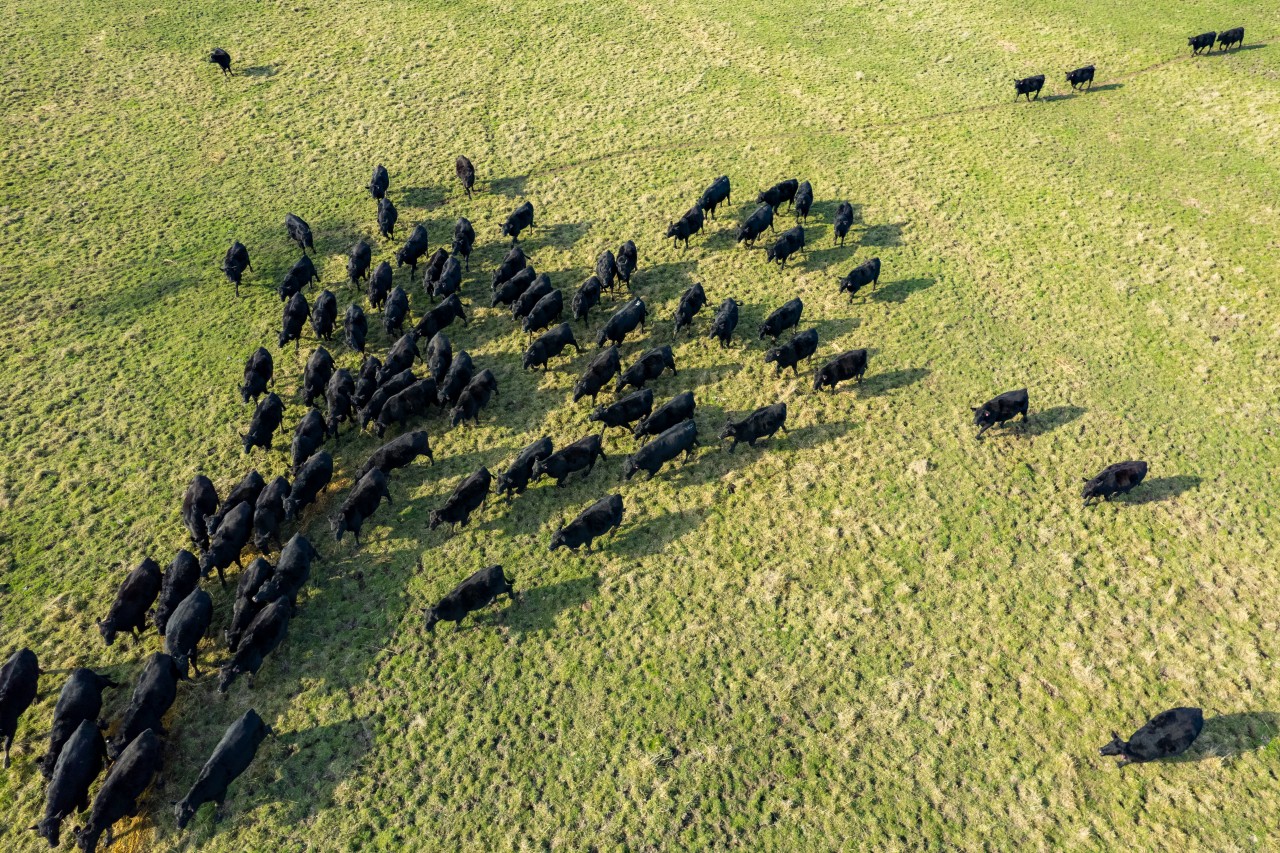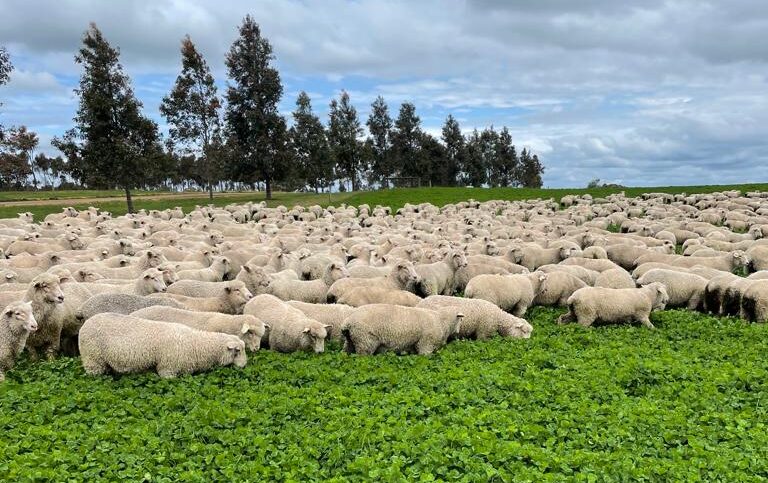Making the most of better seasons by trading cattle
In-brief
• In better seasons, producers will not be able to utilise all the surplus pasture through increasing production of animals already on farm.
• Maximising income during the better seasons is the best way to manage risk in the farm business. Having an opportunistic enterprise up your sleeve is necessary to do this.
• Preparation is key to finding the best opportunities in trading cattle.
Introduction
For some producers, trading livestock is used as an opportunistic tool to utilise surplus pasture. For others, it is part of their core business. When it is core business you cannot be as opportunistic because you simply have to trade to make any money.
Due to a good season and high demand in the current market, available animals have been more expensive and slightly heavier which affect the margin that can be achieved. Understanding the key parameters that will affect a trade margin is key to assessing the merit of trade opportunities, and what strategy will achieve the best outcome within the constraints of the current market.
Although there is not much we can be certain about when it comes to the production and market risk in farming, there is one thing we know for sure. To generate maximum profits over the long term requires capitalising on the above average seasons.
Having an opportunistic enterprise up your sleeve, such as trading livestock, is necessary to take advantage of the good production years. Sure, in better seasons your farm business should make a healthy profit regardless. But even if profits alone are not your biggest motivator, maximising profits in the better seasons is the best way to manage risk of poor commodity cycles and the inevitable droughts in a livestock business because you are lifting production when additional pasture is free. The consequence is there is very little marginal cost associated with feeding extra animals. The additional profits made in one of these good years can therefore more than offset the reduced margins made in several tougher years.
Those hesitant to trade might be looking to boost income through increased production in the animals already on hand. This will also increase profit, but animals can only consume and grow so much, and it is unlikely they will be able to consume anywhere near the excess pasture available.
Case-study
Jill is a cattle producer in New South Wales, managing a core breeding herd of approximately 34,000 DSE. Steers and heifers are turned off at approximately 14 – 17 months of age, weighing 450kg liveweight. Following the drought, Jill has been focussed on capitalising surplus pasture production through 2020 and 2021 by trading steers.
The decision-making process
Like many other producers, Jill has had to quickly become accustomed to historically high buy prices but Jill farms by the attitude “grow grass, eat grass”. Jill regularly runs a feed budget to anticipate any deficit or surplus in pasture availability well in advance. With a target of 1000 kg dry matter per hectare on average across the farm by the end of August, Jill could see she would have considerable surplus pasture through winter – 1,400 steers growing at 0.8kg per head per day for 165 days worth of pasture to be exact.
Trade opportunities for weight gain in steers looked slim in early Autumn 2021 compared with PTIC cows, however Jill felt she had more confidence in managing steer trades on the back of a successful 2020 season and was of the view that it was better to be in the market and capture potential upside with the possibility of breaking even than to not be in at all.
Jill approaches purchasing cattle well-armed with a plan, working on a minimum trading margin (before direct costs) of $310 per head. Jill assumed the sale price at the end of the trade would be similar to the market at the time, which was $4.75 per kg liveweight. Working on 165 days on farm growing at an average of 0.8 kg per head per day, Jill expects the steers to gain 132 kg per head (Table 1). Jill uses these assumptions to calculate her trading margin. Assuming all other factors stay constant, the number one variable affecting the trading margin is the purchase price.
Table 1 depicts a scenario where the buying market was sitting around $1,850 per head for steers at 330kg. Based on Jill’s assumptions, the trade should yield a margin of $345 which is above the targeted minimum.
Table 1. Budgeted trading margin per head based on a series of assumptions prior to purchasing.
| A – Sale Price ($/kg) | $4.75 | |
| B – Purchase price ($/head) | 165 | |
| C – Average Daily Gain (kg/hd/day) | 0.8 | |
| D – Weight Gain (kg/hd) | 132 | D = C * B |
| E Purchase Weight (kg/hd) | 330 | |
| F Purchase Price ($/hd) | $1,850 | |
| G Purchase Price ($/kg) | $5.61 | G = F / E |
| H Sale Weight (kg/hd) 462 | 462 | H = E + D |
| I Sale Price ($/hd) | $2,195 | I = H * A |
| J Trading Margin ($/hd) | $345 | J = I – F |
To ensure Jill has options when bidding, she expands these calculations across scenarios of animals at different purchase weights.
Working backward from a trading margin of $345 per head and assuming all other factors stay constant, Jill is able to calculate the maximum purchase price she can afford to pay for each purchase weight to achieve the same trading margin (Table 2). This allows Jills to quickly assess holes in the market. For example, a more expensive animal per head may actually provide better value than a cheaper animal per head depending on the price per kilogram.
Table 2. Budgeted trading margin for a range of scenarios, using the same assumptions as Table 1.
| Trading Margin ($/hd) | K = J | $345 | $345 | $345 | $345 | $345 | $345 | $345 | $345 |
| L Purchase Weight (kg/hd) | 300 | 310 | 320 | 330 | 340 | 350 | 360 | 370 | |
| M Sale Weight (kg/hd) | M = L + D | 432 | 442 | 452 | 462 | 472 | 482 | 492 | 502 |
| N Sale Price ($/hd) | N = M * A | $2,052 | $2,100 | $2,147 | $2,195 | $2,242 | $2,290 | $2,337 | $2,385 |
| O Purchase Price ($/hd) | O = N – K | $1,708 | $1,755 | $1,803 | $1,850 | $1,898 | $1,945 | $1,993 | $2,040 |
| P Purchase Price ($/kg) | P = O / L | $5.69 | $5.66 | $5.63 | $5.61 | $5.58 | $5.56 | $5.53 | $5.51 |
Reaping the benefits
Four months later and Jill stands to yield even higher trading margins than anticipated due to increased cattle prices. In total, trading the steers will add around $915,000 in profit to her business (Table 3).
Table 3. Details of Jill’s trade including purchase details, direct costs and expected sale results. Blue figures indicate where information has been provided.
| A Purchase Date | 01-Apr-21 | |
| B Head Purchased | 1,403 | |
| C Purchase Weight (kg/hd) | 345 | |
| D Purchase Value ($/hd) | $1,850 | |
| E Purchase Value ($/kg) | $5.36 | E = D / C |
| F Animal Health ($/hd) | $20 | |
| G Selling Cost (%) | 2.5% | |
| H Selling Cost ($/hd) | $66 | H = G * P |
| I Interest Rate (%) | 2.0% | |
| J Interest Cost ($/hd) | $37 | J = I * D |
| K Total Cost ($/hd) | $123 | K = F + H + J |
| L Days on Farm | 165 | |
| M ADG (kg/hd/day) | 0.7 | |
| N Weight Gain (kg/hd) | 116 | N = M * L |
| O Sale Weight (kg/hd) | 461 | O = C + N |
| P Sale Value ($/kg) | $5.70 | |
| Q Sale Value ($/hd) | $2,625 | Q = P * O |
| R Gross Margin ($/hd) | $652 | R = Q – K – D |
| S Total Gross Margin | $915,077 | S = R * B |
To put this into perspective, if Jill didn’t trade cattle this year, how much additional weight gain would she have had to achieve in his steers and heifers bred on farm? This year, Jill is set to turn off 880 steers that bred on farm between 14 and 17 months of age.
To generate an additional $915,000 in gross margin to match what she could achieve by trading cattle, Jill would have to increase her beef production in these animals by 160,500 kilograms or 182 kilograms per head (Table 4). Comparing the same period of 165 days, Jill would need to lift the cattle production from 0.7 kg per head per day to 1.8 kilograms per head per day. This change in turn-off weight may also put the animals in a weight range that results in a discounted price, further increasing the additional production required to make the same gross margin as the trade cattle.
Had Jill decided to not trade steers this year, and instead used surplus pasture to increase individual animal performance in stock already on hand, she would not have generated anywhere near the same gross margin nor utilised surplus pasture as efficiently.
Table 4. Assuming steers bred on farm will be sold for $5.70 per kilogram, the required additional production to generate the same gross margin as the trade cattle is calculated.
| T Starting Date | 01-Apr-21 | T = A |
| U Head Sold | 880 | |
| V Starting Weight (kg/hd) | 220 | |
| W Days on Farm | 165 | W = L |
| X Current ADG (kg/hd/day) | 0.7 | X = M |
| Y Current Weight Gain (kg/hd) | 116 | Y = X * W |
| AA Sale Value ($/kg) | $5.70 | AA = P |
| AB Additional production required to match trade GM | $160,540 | AB = S / AA |
| AC Additional production required (kg/hd) | 182 AC | AB / U |
| AE Required ADG (kg/hd/day) | 1.8 | AE = (AC + Y) / W |
Summary
To capitalise on the better seasons through trading cattle requires some planning. There are three key parts to the planning process:
- Assess your expected feed availability throughout the coming season using a feed budget. Think critically about the weight gain achievable, taking into account the time frame available. These two elements are what you need to determine the number of additional animals you can trade.
- Do the sums before you get to the sale yard. Based on your view of sale price, expected weight gain and any direct costs and cost of capital, you can work out what you can afford to pay on the day. Running a range of scenarios will enable you to make a quick decision on the best value animals.
- Make sure capital is not constraining your decision. If you need to access finance for trading stock, put the process in motion well in advance of when you need to make the decision to purchase trade stock.
Do you need expert advice on how you can expand or weather market irregularities when running a farming business? Speak to one of our livestock specialists today.
Author
Aggregate Consulting is an agricultural consultancy business based in Wagga Wagga in southern NSW.







